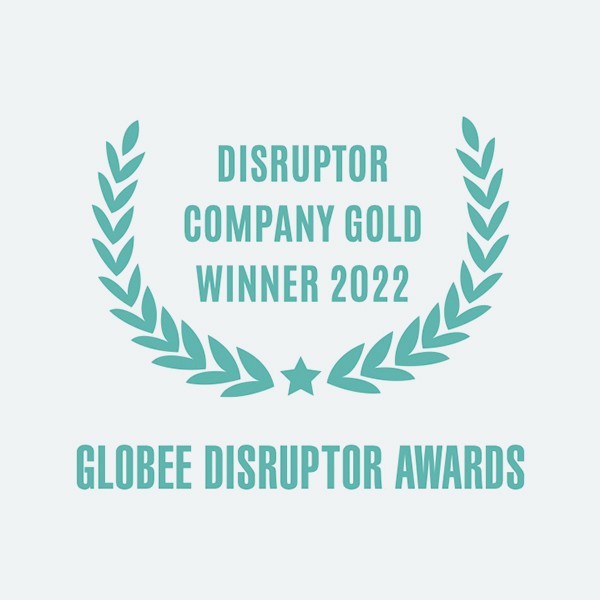

Business Case vs Business Plan: What Startup Founders Need to Know (And How to Build a Strong Business Case)
9th October 2025
Every founder knows the pressure of being asked for “the business plan”. It’s the phrase that crops up in investor conversations, accelerator programmes and even casual chats with peers. Yet in practice, many of the documents presented under that label are not business plans at all. They are business cases: carefully crafted arguments for why money should be spent, why a project should go ahead, or why an investor should part with capital.
This confusion is not trivial. Presenting the wrong document to the wrong audience risks weakening your credibility. It suggests you may not fully understand the expectations of the people you’re speaking to, or worse, that you haven’t taken the time to think clearly about the purpose of the exercise. That’s why understanding the difference between a business plan and a business case matters so much for startups. One is a comprehensive roadmap of your company’s long-term vision, strategy and operations. The other is a targeted justification for a single decision. Both are essential at different moments, but they are not interchangeable.
Whether you need a business plan or a business case pitch deck, we can help! Find out more about our startup consulting services.
Why the terms get muddled

Language in the startup ecosystem has always been a little loose. Founders talk about “runway” when they mean months of cash left, “traction” when they mean a mix of sales, sign-ups and media attention, and “valuation” when what they really have is a hopeful estimate. In that context, it is easy to see why “business plan” has become a shorthand for any serious-looking document with numbers in it.
Part of the problem is historical. In the late 1990s and early 2000s, before the lean startup approach and the pitch deck culture we know today, investors often did expect a traditional business plan: fifty-page tomes outlining every possible detail of the market, product, and financial outlook. As expectations shifted towards brevity and focus, the phrase lingered, but the substance evolved into something closer to a business case.
Another reason for the confusion is that advisers and incubators sometimes encourage founders to “get their business plan ready” when what they actually want is a financial justification for a specific funding round. Investors themselves can muddy the waters, asking for a “plan” but only reading the pages with the numbers.
Business plan vs business case: a clear distinction
To help make sense of this, it is worth setting out the differences side by side.
| Aspect | Business plan | Business case |
| Purpose | Outlines the overall strategy and operations of a company | Justifies a specific project, decision, or investment |
| Scope | Wide-ranging: vision, market, product, operations, marketing, sales, team, financials | Narrow: options considered, costs, benefits, risks, ROI |
| Timeframe | Long-term: usually 3–5 years | Short to medium term: specific to the project’s lifecycle |
| Audience | Investors, banks, partners, internal teams | Decision-makers, boards, investors considering a particular round, grant assessors |
| Format | Comprehensive document or deck (20–40 pages) | Concise and focused, often 5–10 pages or slides |
| Key content | Market analysis, competitive positioning, strategy, team, forecasts | Problem statement, options, cost-benefit analysis, risks, recommendation |
Once you see the comparison, the distinction becomes much clearer. A business plan says: here’s who we are and how we’ll grow. A business case says: here’s what we propose, what it will cost, and why it’s worth it.
DOWNLOAD: Free Business Plan Template
When you need each
A founder raising seed or Series A investment typically needs a plan, because investors want to understand the long-term story. What market are you entering? How will you scale? Who is on the team? How do the numbers stack up over the next five years?
But suppose you are later in your journey and want to secure an additional £500,000 to open a second warehouse, develop a new feature, or expand into Germany. In that situation, a business case is the appropriate tool. It shows that you have weighed the options, considered the risks, and calculated the expected return. It reassures decision-makers that you have not just dreamt big but thought practically about one very specific step.
Even internally, a business case can be essential. Imagine you are debating whether to hire a chief marketing officer now or delay until Series B. A well-crafted business case allows your leadership team to weigh costs and benefits objectively.
READ: Funding rounds explained – a guide for startups
The anatomy of a strong business case
A compelling business case follows a clear structure. It doesn’t need to be long, but it does need to be thorough.
1. Problem or opportunity statement
- Set out clearly what you are addressing. This could be an operational bottleneck, a market opportunity, or a technology investment.
2. Options considered
- Show that you have thought about alternatives. For example, if you’re seeking funds to automate a process, note that you also considered outsourcing or sticking with manual methods
3. Costs and required investment
- Provide precise numbers: upfront capital, ongoing operating costs, and any one-off fees. Transparency here is vital.
4. Benefits
- Outline both financial and non-financial benefits. Financial benefits might be increased revenue or reduced costs. Non-financial benefits could include improved customer satisfaction, reduced staff turnover, or enhanced brand reputation.
5. Risks and mitigations
- Investors and boards are always alert to what could go wrong. Show that you have identified risks (market shifts, supply issues, regulatory hurdles) and thought through how to manage them.
6. ROI or payback period
- Put forward the financial case in clear terms. What is the expected return on investment? How quickly will the project pay back? What assumptions underpin these projections?
7. Recommendation
- End with a clear statement of what you propose and why it is the best option. Decision-makers should feel that you have done the heavy lifting and that the choice is straightforward.
CASE STUDY: See how we created a business case and pitch deck for Plend
Building your own business case: a step-by-step guide
Creating a business case is as much about process as it is about content. Here’s how founders can approach it:
- Gather evidence and data
- Start with facts. Market data, customer feedback, operational metrics, or competitor benchmarks all strengthen your case.
- Model financial scenarios
- Don’t just show a single outcome. Present base, optimistic and conservative cases. This demonstrates rigour and builds confidence.
- Align with strategy
- Make clear how the decision fits into your broader vision. If your mission is to dominate the UK market, show how the warehouse expansion is a logical step towards that.
- Package for decision-makers
- Keep it concise. Remember that your audience will be busy. Five to ten pages is usually enough if the analysis is sharp. Supporting data can go in appendices.
Common mistakes to avoid
Even experienced founders stumble here. Some fall into the trap of writing long narratives without enough data, assuming that passion will carry the day. Others gloss over risks, only for investors to point them out immediately. Some focus entirely on financial returns and forget the strategic or non-financial benefits that can be equally persuasive.
And then there is the simplest mistake of all: calling it a ‘business plan’ when it is in fact a business case. It may seem like a small slip, but in the eyes of an investor or a board member it can signal carelessness. Precision in language suggests precision in thinking.
Why getting this right matters

Startups live and die by their credibility. You may not have decades of trading history or millions in revenue, but you can show that you understand how serious decisions are made. That is what a business case communicates. It says: we know the risks, we’ve looked at the options, and we’ve thought about the return.
Handled well, a business case is not only a tool for securing investment but a discipline that sharpens your own decision-making. It forces you to be honest about costs, clear about benefits and realistic about risks. It creates alignment within your team. And it builds trust with external stakeholders who want to know you are capable of navigating the complexities of growth.
A business plan and a business case are different instruments in the same orchestra. Each has its role, and when used at the right moment they can create harmony between vision and execution. Get them confused, and the result is noise. Get them right, and you give your startup a better chance of hitting the notes that matter.
Don’t forget that whether you need a business plan or a business case pitch deck, we can help! Find out more about our startup consulting services.
Claim your Free Copy of Investable Entrepreneur
Investable Entrepreneur takes you through our winning methodology – the process we use to increase our client’s chances of raising investment by more than 30x.
“This book will help you translate your entrepreneurial vision into something investors can get behind.”
Daniel Priestley, CEO and founder, Dent Global and four times best-selling business author

Keep up to date with what we’re up to via email






Copyright ©Robot Mascot Ltd. All rights reserved.


